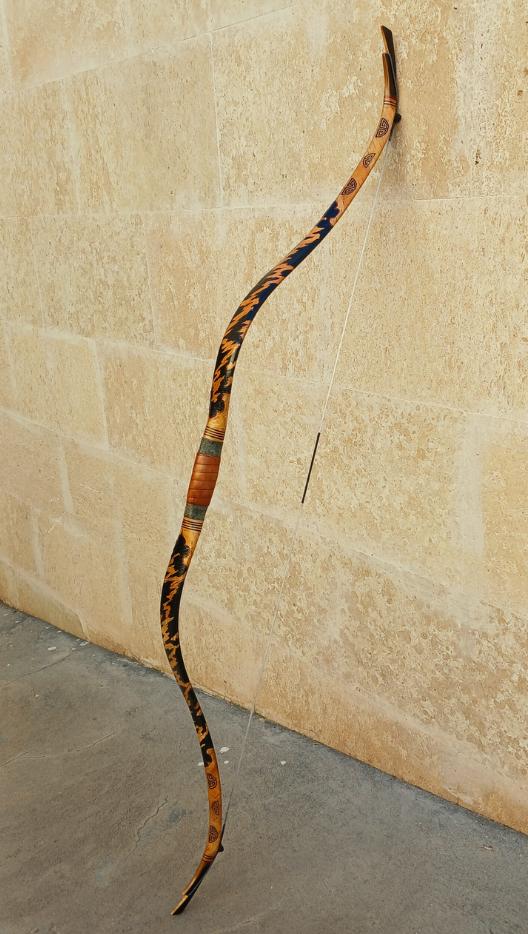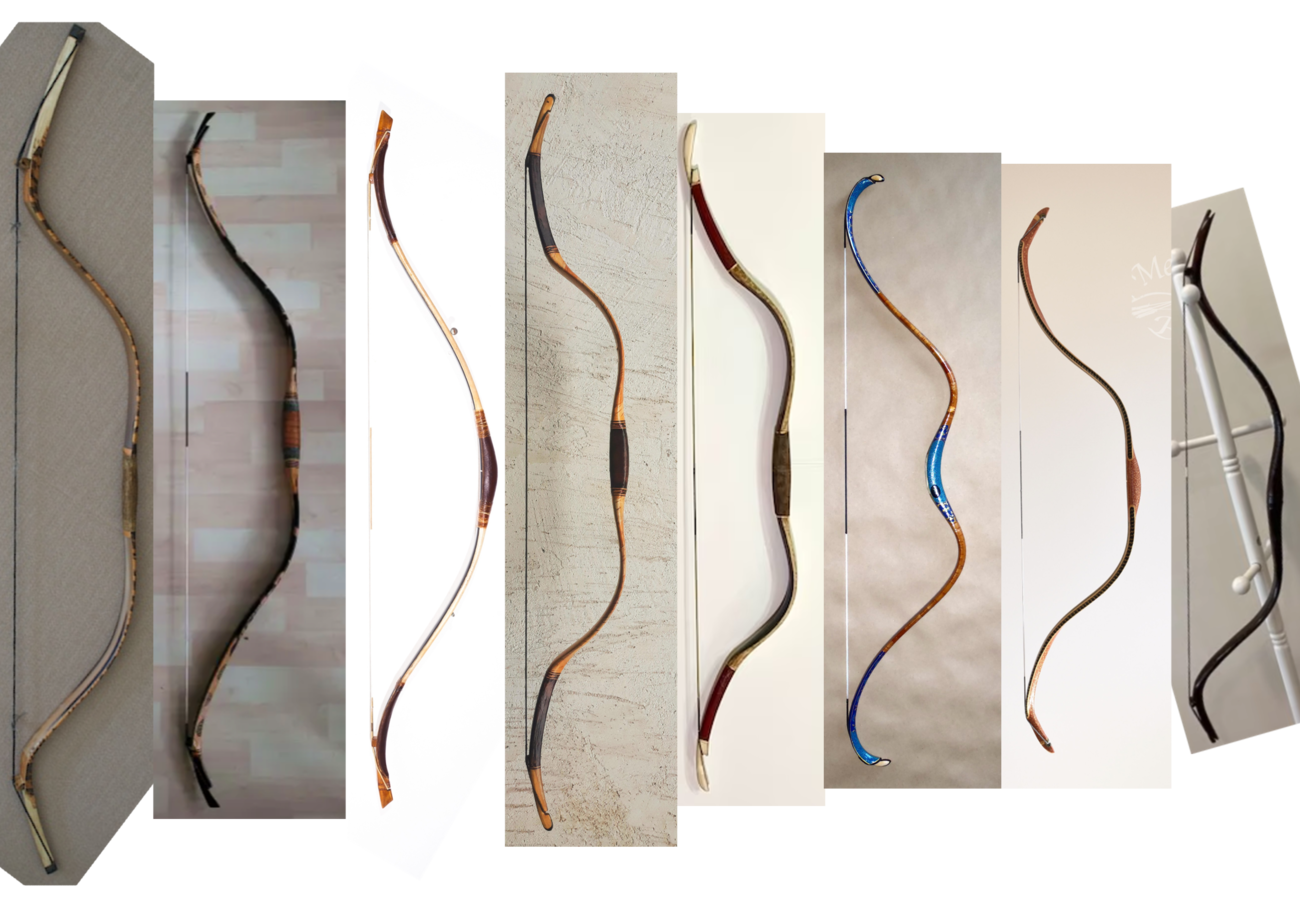
There is a common style known simply as "trad" or "traditional" archery. Despite the name, it is anything but.
it is modern, both in equipment and technique. It's actually just the traditional method of the modern era of archery.
Just to clarify, there is absolutely nothing wrong with shooting like this. If what you want is a modern shooting style invented in the mid 20th century, go nuts with it! I'm only
pointing this out because a *lot* of people start "traditional archery" because they think it's historical. I myself was initially tricked into this style by the name.
For those who are curious, or just not convinced, I'll list out a few of the things that differ in the traditional modern archery.
 The bow typically has a very long static handle ('riser'), along with a shelf and pistol grip. None of these features are historical as they really just aren't practical outside of a modern target context.
The bow typically has a very long static handle ('riser'), along with a shelf and pistol grip. None of these features are historical as they really just aren't practical outside of a modern target context.
 The form is relatively weak and stiff and the archers typically draw the bow very short, but the stance is simpler to reproduce which makes it easier to be accurate with.
The form is relatively weak and stiff and the archers typically draw the bow very short, but the stance is simpler to reproduce which makes it easier to be accurate with.
Most trad archers shoot bows with a resistance of ~30-40lbs. The very heaviest trad bows are around 60-70lbs.
Historically, this is like pulling air. Light warbows start at around 80lbs, medium weights are around 100-120lbs, and heavy warbows generally go up to 160lbs and sometimes even above that. This isn't due to a skill issue it's just that historical form is much far energy efficient because the bows needed to pierce armor. Modern archery is primarily concerned with raw accuracy, it matters much less if the arrows are capable of harming the target it only need to stick to it.
Also this is kind of a tangent but the modern terminology is just really silly? Like for example they call almost anything that's sort of straight-ish a longbow. It's really hard for me to take it seriously when someone says they "prefer longbows because it's traditional" and they
send a picture but it's actually a deflex reflex fiberglass-carbon laminate flatbow with the full modern package; pistol grip, shelf, riser and all. It has happened a couple times and I haven't had the heart to tell them.
Military archery is a broad term for different shooting styles intended for warfare.
There are many shooting styles for this, but they share commonalities in form. Only so many ways to safely pull a powerful bow afterall. I primarily do Chinese archery, with some Japanese archery on the side. Here's a photo of my most prized bow just to give you a quick taste, I'll talk more about the designs right after. 
There are different military bows but the most common ones were either self bows ( such as the English longbows ) or horn composites. Self bows are made of a single piece of wood/bamboo and their main purpose was to be dirt cheap, fast and easy to make but still good enough to use.
Eastern cultures tended to have more well funded militaries and preferred highly advanced designs made of several materials. This is the type that I'm most interested in. The most common material combination, the horn composite bow, was historically made with horn, wood and sinew and they were the very best bows one could get. They come in a vast variety of shapes with different purposes. 
The picture above is one such authentic composite bow that I commissioned from a known bowyer. The average wait time to get one is about 2 years and they tend to cost around 3000-4000usd. I'm on student money so I had to save a whole year's worth of income just for this bow. It's very important to me.
But don't worry there are far more affordable options!
The most common material combination in the modern day are wood-fiberglass laminated bows. Fiberglass is replacing the job of the horn and sinew,
the shape and performance of laminated bows is very similar to horn bows and at lighter weights they actually even outperform horn. The cheaper ones go for around 120-200usd, not bad at all!
As a whole, the eastern bow deisgns are usually grouped under the term Asiatic bows. The name is slightly inaccurate, since not all of these bows are from Asia,
for example many of them are Turkic in origin. But it's still the defacto term we use.